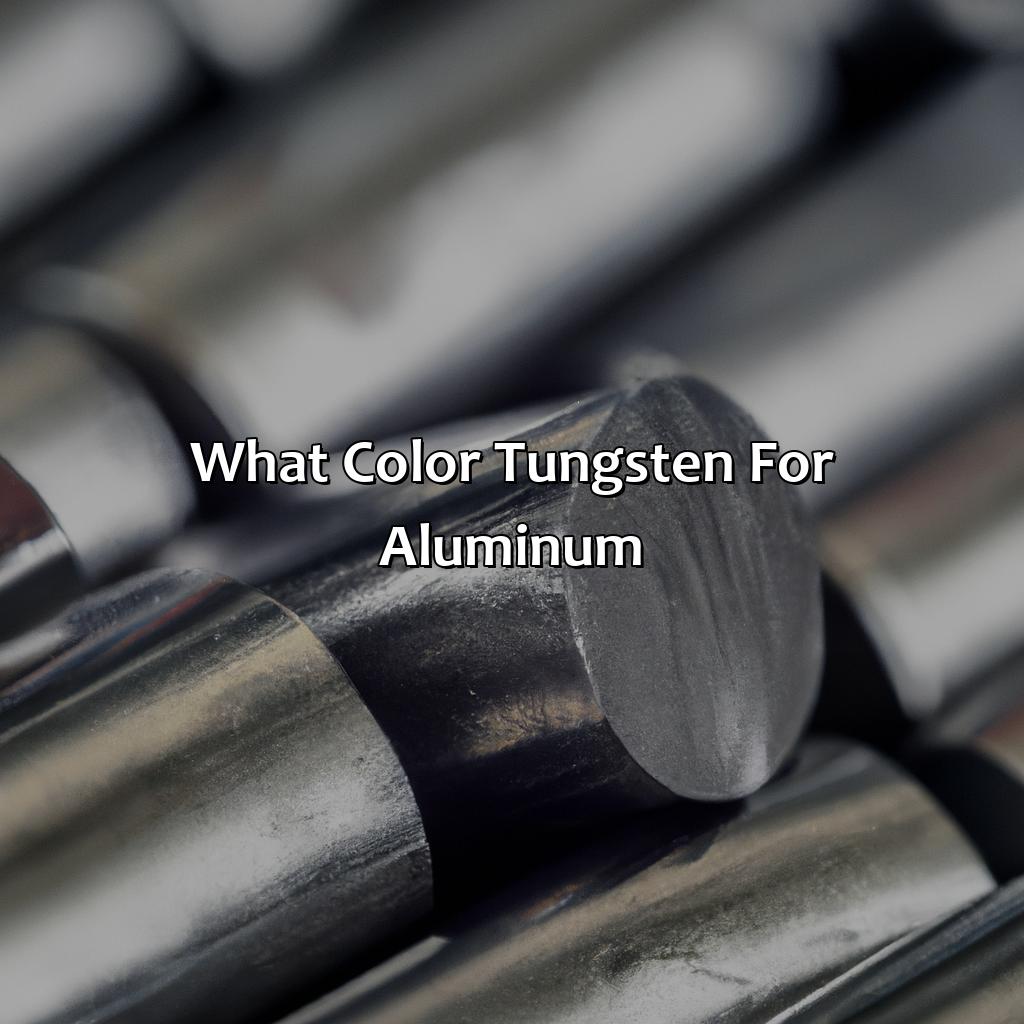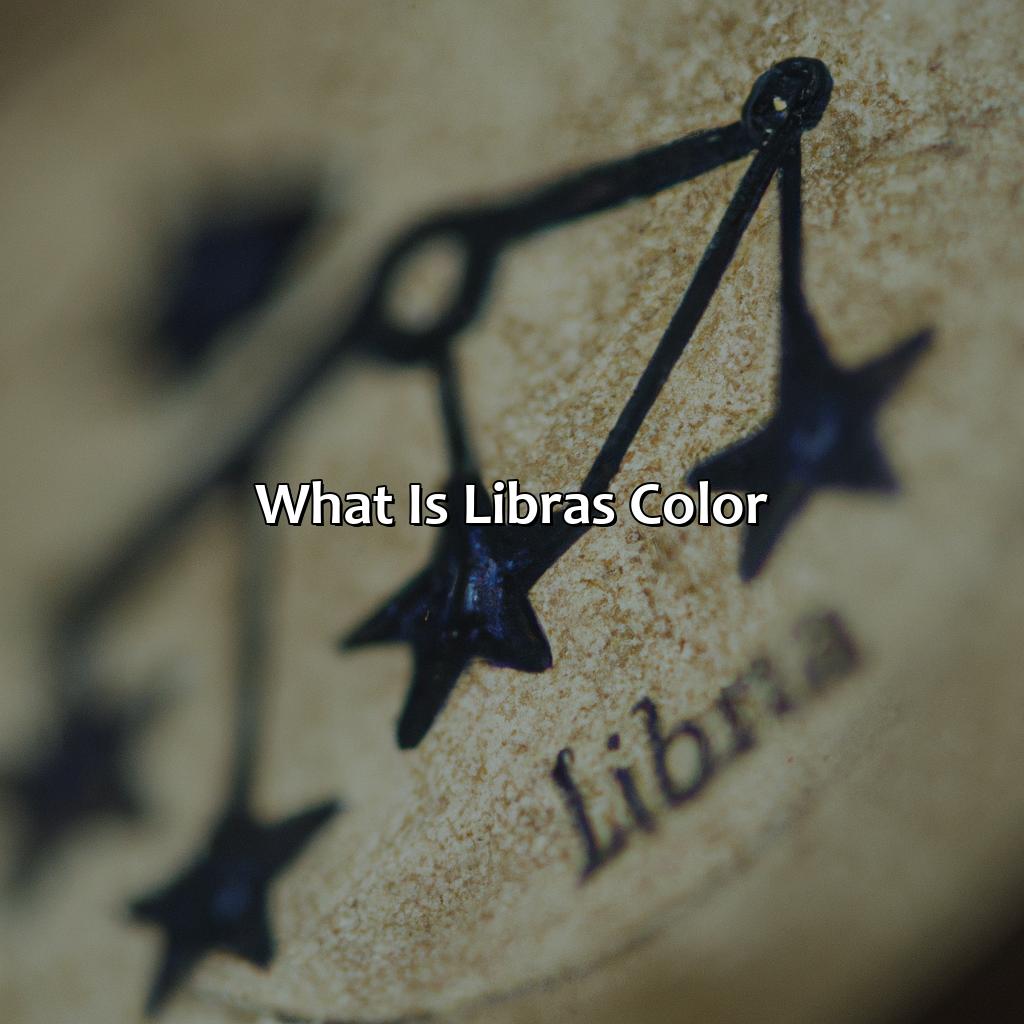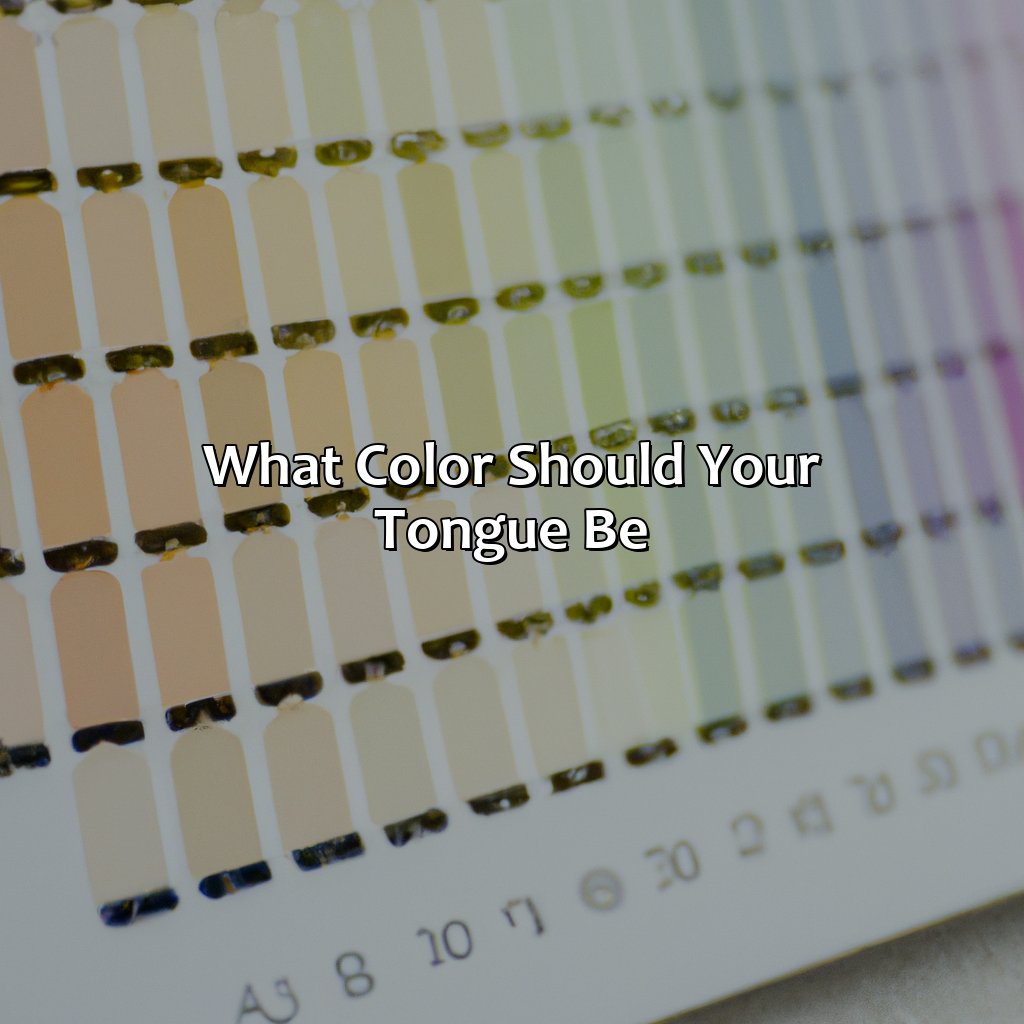Key Takeaway:
- Understanding your skin tone and undertones is crucial in choosing the right bronzer shade for your complexion. Fair skin tones should opt for light matte or light shimmer bronzer shades with pink or golden undertones. Light to medium skin tones should use light matte or light shimmer bronzer shades. Medium to dark skin tones can choose medium matte or medium shimmer bronzer shades. Olive skin tones should use dark matte or dark shimmer bronzer shades. Deep matte or deep shimmer bronzer shades are perfect for dark skin tones.
- When choosing a bronzer, consider factors such as the occasion and season, formula and finish, and your preference for a natural or dramatic look. Formula options include baked, cream, powder, liquid, and stick, with finishes ranging from matte to shimmer to metallic. Choose a formula that complements your skin type and offers the desired finish.
- Application techniques and tools play a key role in achieving a flawless bronzed look. Consider different application areas such as cheeks, temples, nose contour, jawline, neck and chest, and use appropriate tools such as brushes, sponges, fingers, or dual-fibre brushes. Blending techniques such as circular motion, feathering, tapping, and layering can help achieve a natural-looking finish. In case of bronzer mistakes, blend with foundation, concealer, or powder, start light and build up, and experiment with layering and mixing different bronzer shades and formulas.
Understanding Bronzers
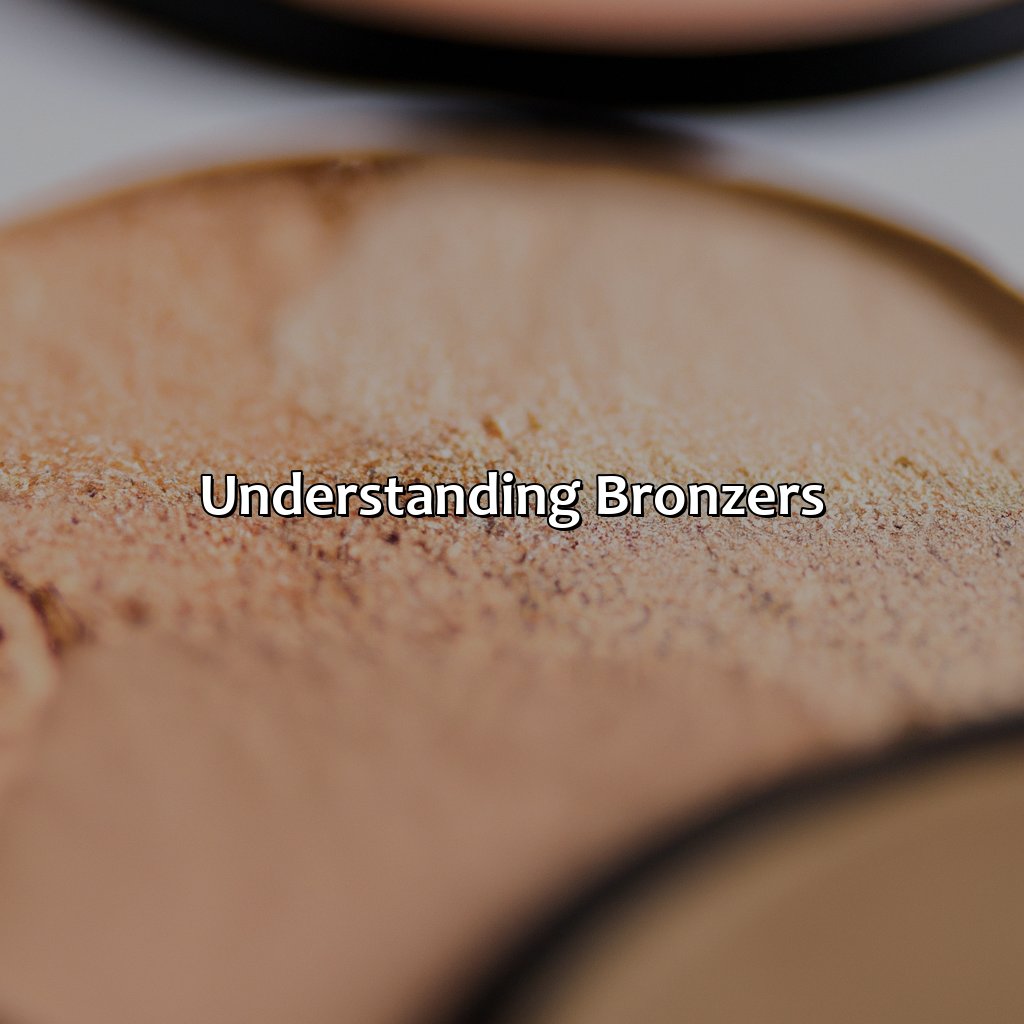
Photo Credits: colorscombo.com by Larry Carter
Bronzers are a popular makeup product used for contouring and highlighting the face, achieving a sun-kissed look, and adding an extra dimension to the complexion. To achieve the desired look, it’s essential to understand which bronzer shade works best for your skin tone. The right bronzer shade can enhance your complexion, while the wrong one can make it look muddy or orange.
When it comes to selecting the perfect bronzer shade, many factors come into play, such as the season, occasion, and your undertones. For a natural look, choose a bronzer that complements your skin tone. For the summer, a warmer and more golden shade can be used, while for winter, a cooler and more muted shade is preferred. Understanding your undertones is essential in selecting the correct bronzer shade. For cooler skin tones, look for a shade with slight pink or ashy undertones, while for warmer skin tones, a bronzer with golden or peachy undertones is preferred.
Once you have selected the right bronzer shade, application is key. Start by using a light hand and build the product gradually, as it’s easier to add more product than to take it off. Using a fluffy brush, apply the bronzer in the shape of a “3” on either side of the face, starting at the forehead, moving down to the cheekbones, and then onto the jawline. This technique creates a natural shadow and lifts the face, giving it a more defined look.
Incorporating bronzer into your makeup routine can be intimidating, but with the right bronzer shade, application technique, and knowledge of your skin tone and undertones, achieving a natural and radiant look is possible. Don’t be afraid to experiment with different shades and application techniques to find what works best for you.
Factors to Consider in Choosing a Bronzer
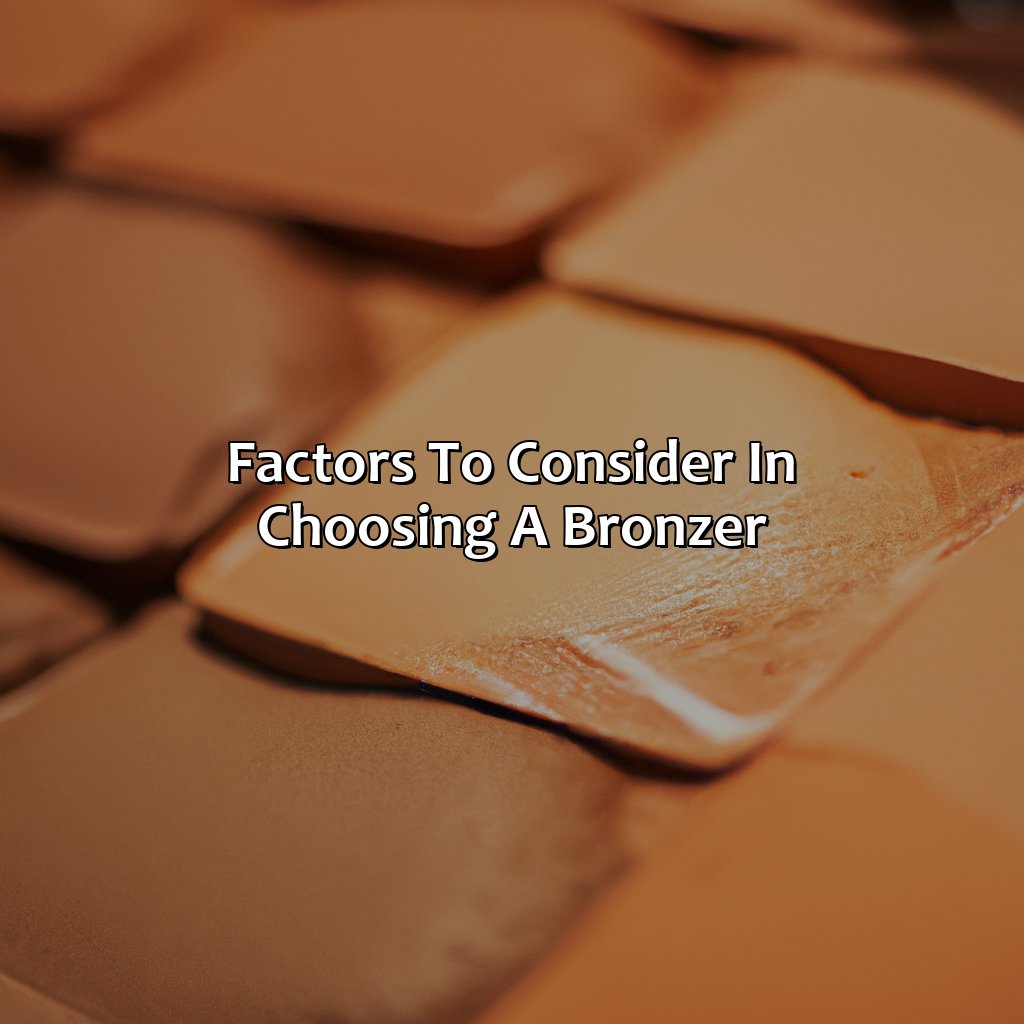
Photo Credits: colorscombo.com by Joseph Gonzalez
Choosing the perfect bronzer? Skin tone, undertones, season, occasion; they all matter! Here’s how to find the right one:
Skin Tone: fair, light, medium, olive, dark, warm, cool.
Undertones: warm, cool.
Season: summer, winter.
Formula & Finish: matte, shimmer, metallic, sun-kissed, natural, artificial, blend, brush, baked, cream, powder, liquid, stick, formula, finish, glow, luminous, shiny, subtle, dramatic.
For a flawless look, these three factors can help you choose the best bronzer for you.
Skin Tone and Undertones
The color of bronzer you choose should complement your skin tone and undertones, which can vary from warm to cool. It is important to consider these factors when selecting a bronzer as it can make or break the overall look. Undertones refer to the underlying color of your skin, and are either cool or warm. Cool undertones have a blue or pinkish hue, while warm undertones have a yellow or golden hue.
To determine your skin tone and undertones, look at the veins on your wrist – if they appear blue, you likely have cool undertones, while green veins suggest warm undertones. Skin tones can range from fair to dark, which further impacts the bronzer shade that will suit you best.
When selecting a bronzer shade for fair skin tones with cool undertones, opt for a light brown or beige shade. For those with warm undertones, select peachy or golden hues. Light skin tones can benefit from medium beige shades with cool undertones and peachy or honey-toned shades with warm undertones.
Medium skin tones should aim for medium bronze colors with red or orange hues if they have cool undertones and gold-hued shades for those with warm undertones. Olive skin better suits deep bronzers in red-brown shades if you have cool tones and yellow-golden shades if you have warm ones.
Those with dark skin should pick deep bronze shades in rich chocolates for those with cool and red-bronze hues if their undertone is warm.
Having the right tools when applying bronzer is just as important as choosing the correct shade. Use a fluffy brush to apply over cheekbones, forehead, temples, jawline and bridge of the nose; avoid using too much product initially – build up gradually.
History notes suggest that Egyptians used shimmery powders on their faces over 6,000 years ago; women in ancient Greece were known to paint their faces with light-toned, radiant pigments. Today using bronzers has become a go-to trend in makeup and is used commonly worldwide.
Bronzers: because who needs a summer tan when you can fake it all year round?
Occasion and Season
The occasion and season play a crucial role in choosing the right bronzer. For summer, opt for lightweight, waterproof formulas with a natural finish. Whereas in winter, use bronzers with warmer undertones to add radiance to your skin. Using the correct shade and formula will enhance your look depending on where you’re going and what event you’re attending.
It’s important to consider the climate before applying bronzer since it can affect how it looks on your skin. During summer months, it’s best to avoid shimmer or glitter since they tend to be too intense under sunlight, making your face look oily or chalky. However, during winter months, applying shimmery bronzers can give a shine that reflects light without giving an overpowered shine.
Additionally, avoiding matte finishes for summer is ideal as it can make the bronzer look too dry or powdery under sunlight. In contrast to this, matte finishes are perfect for winter month occurrences as it provides better contrast with the bright silver and golds of holiday decorations.
Pro Tip: Applying bronzer according to occasion and season can significantly impact how people ‘perceive’ your makeup skills. Whether you want a subtle glow or a dramatic shine, the formula and finish of your bronzer can make all the difference – just don’t forget the blend brush!
Formula and Finish
Bronzers come in a variety of formula and finish, ranging from matte to shimmer to metallic. Selecting the right one is crucial as it can make or break your overall look. The chosen formula for the bronzer can impact how natural or artificial the sun-kissed glow appears on your skin.
Furthermore, the finish of bronzer can range from subtle and luminous to bold and dramatic. Your selection should depend on the occasion and season, as well as your skin tone and undertones.
When choosing a bronzer shade, individuals need to consider their skin tone – fair, light, medium, olive or dark. Matching up with the perfect shade could result in a natural-looking contour while choosing too dark could result in an unrealistic effect.
Application techniques are also important for achieving a polished look. After selecting the areas where you want to apply the bronzer such as cheekbones, forehead and jawline, choose between baked, cream, powder, liquid or stick bronzer formulas that best suit each area. For instance liquid bronzer works great for cheekbone highlight while powdered products work optimal on forehead.
To maximise effectiveness when applying bronzer requires using a brush; blenders will ensure even application without harsh lines. Use these tools with blending techniques that have smooth gradients and textures for a luminous yet subtle finish.
Last but not least, layering techniques offer another dimension when aiming to create depth so customers should know how to mix different shades properly. In case of mistakes happening during application know some tricks necessarily needed like toning down shimmery looks with some powder.
According to dermatologist Dr Alok Vij, retinol helps to reduce age spots which appear by using sun damage protection products regularly.
Finding the perfect bronzer shade is like a game of Goldilocks, but for your skin tone.
Choosing the Right Bronzer Shade

Photo Credits: colorscombo.com by Joe Williams
For the right bronzer for you, explore “Choosing the Right Bronzer Shade”. Here you’ll find sub-sections for:
- “Fair Skin,”
- “Light Skin,”
- “Medium Skin,”
- “Olive Skin,” and
- “Dark Skin”.
Each has the right type of bronzer and words like ‘matte’ or ‘shimmer’, to boost your beauty.
Fair Skin
For those with a lighter skin tone, choosing the right bronzer shade can be tricky. Generally speaking, fair skin has pink or golden undertones that need to be considered when selecting a bronzer. It is essential to find a product that will complement your skin without making you look too orange or muddy. When it comes to formula, a light matte bronzer is an excellent choice for fair skin as it gives a subtle yet natural-looking glow. Alternatively, if you prefer shimmer, look for a light shimmer bronzer that will bring more luminosity to your complexion.
To achieve the perfect tan finish on light skin, apply the bronzer on areas where the sun would naturally hit – such as the forehead, cheeks, and nose. Avoid over-applying or using too much product as this may give a harsh appearance to your makeup look. For tools, use a fluffy brush or angled brush with soft bristles that allow easy application and blending of the product into your skin.
Did you know that using a bronzer that is too dark for your fair skin can make you appear older than you are? According to Allure magazine beauty editors, using one to two shades darker than your natural color is enough for creating a healthy sun-kissed look without giving an exaggerated effect.
Light skin calls for a light touch – opt for a light matte bronzer or a light shimmer bronzer, depending on your mood.
Light Skin
For those with light to medium skin tones, choosing the right bronzer can enhance your natural glow. When it comes to finding the perfect shade, opt for a light matte bronzer for a more natural look or a light shimmer bronzer for a subtle glow. A key factor in selecting the shade is determining your skin’s undertones.
To complement light skin with warm undertones, choose bronzers with peachy or golden hues. Cooler undertones can be enhanced with bronzers that have pink or rosy tones. It’s also important to consider the occasion and season – lighter shades may work better for daytime looks while deeper shades may be more appropriate for evening events.
When applying bronzer on light skin, focus on areas where the sun naturally hits such as the forehead, nose, cheeks and chin. Use an angled brush to apply bronzer in small circular motions and blend outwards towards the hairline and jawline.
It’s important to avoid overdoing it – less is more when it comes to bronzing. Layering techniques can help achieve a more natural look without appearing too heavy-handed. Additionally, mixing and matching different shades of bronzers can create a more personalized look.
Fun fact: According to a study by Statista, revenue from bronzer sales in the United States reached $162 million in 2020.
Medium skin? More like medium-rare – make it pop with a matte or shimmer bronzer!
Medium Skin
For those with medium skin, it can be challenging to find the perfect bronzer shade that complements their complexion. Medium skin falls between light and dark, making it essential to choose a bronzer that is not too light or too dark. Moreover, one should opt for a bronzer that either has a matte finish or shimmer finish, depending on the occasion.
When selecting a bronzer for medium to dark skin tones, it’s crucial to keep in mind the undertones of your skin. Warm-toned individuals can select bronzers with orange or red undertones, while cool-toned people may prefer more brown or grey-based shades. For medium skin women who want matte coverage, consider using a medium matte bronzer with yellow undertones as this will give the appearance of warmth without looking heavy-handed. Women looking for some sparkle should go with a medium shimmer bronzer with subtle golden sheen.
It’s advisable when using bronzer on medium-dark skin; you don’t overuse it as this could result in an unnatural look. Instead, start by applying it gently and adding layers to achieve your desired effect. For instance, start by lightly dusting the cheeks and forehead while gradually building up to the nose bridge.
Pro Tip: Always remember that the purpose of using bronzer is highlighting features and adding warmth, not changing the natural hues of your face—utilize it judiciously for positive results!
Olive skin is like a blank canvas, waiting for the perfect dark matte or dark shimmer bronzer to bring out its inner goddess.
Olive Skin
When it comes to choosing the right bronzer shade for olive skin, it’s important to keep in mind that not all bronzers are suitable for this skin tone. It is best to opt for a bronzer that is either a dark matte or dark shimmer which will complement the warmth and undertones of olive skin.
To find the perfect bronzer shade, consider the intensity of your olive complexion. If you have a cooler undertone, choose a bronzer with more brown or red hues. However, if you have warmer undertones, opt for a bronzer with gold and copper tones.
It’s also essential to consider the occasion and season when selecting a bronzer shade for olive skin. For formal events during winter months, go with a darker matte shade or try out a shimmer bronzer during any summer occasion.
Application techniques are vital in achieving an ideal finish when using any product on your face. Start by applying the product onto highpoints such as cheekbones and forehead first before blending downwards into other areas where contouring is needed such as jawline or nose bridge. Use an angled brush instead of round ones for precision purposes.
Last but not least, layer bronzers together to achieve that sun-kissed look effortlessly. Olive toned browns can even work amazingly solo depending on how much product is used, so make sure to test them out well enough before blending them together.
A true story involving olive skin concerns Sina Deem who was afraid of being too orange while wearing bronze products until he discovered dark matte combinations that brought out his warm-looking glow without creating an artificial appearance.
If you have dark skin, a deep matte bronzer can have you looking like a goddess, but a deep shimmer bronzer can have you looking like a disco ball. Choose wisely.
Dark Skin
For those with deeper complexions, selecting the right bronzer shade is essential. To achieve a natural-looking glow, opt for deep matte bronzers that mimic the warmth of your skin without adding too much shimmer or sparkle. Alternatively, if you want to add some radiance to your complexion, select deep shimmer bronzers with warm undertones that will complement your skin tone.
When choosing a bronzer for dark skin, it’s important to consider the undertones of your complexion. If you have cool undertones, opt for bronzer shades with warm hues like gold or bronze. Those with warmer undertones can opt for deeper shades with hints of red or orange.
Unlike fairer skin tones, darker complexions can handle more pigment. So don’t shy away from intensifying the amount of bronzer you apply, letting it blend seamlessly into your skin and providing that authentic sun-kissed look.
Pro Tip: Remember, a little goes a long way when working with dark matte bronzer shades – so start by using small amounts and build up the color gradually to prevent overloading your face with product.
Applying bronzer is like painting a masterpiece – you need the right brushes and techniques to achieve a flawless finish.
Application Techniques and Tools

Photo Credits: colorscombo.com by Kenneth Anderson
Achieve the perfect bronzed look by mastering the application of bronzer!
Here’s where to apply: cheeks, temples, nose contour, jawline, neck, and chest. Use tools like a brush, sponge, or fingers. Blending techniques to master are circular motion, feathering, tapping, and layering.
Finally, you’ll have a natural, flawless look!
Application Areas
To apply bronzer, it is essential to understand the key areas where it should be placed. Each area serves a different purpose and creates a unique look for the face and neck. These areas include the cheeks, temples, nose contour, jawline, neck and chest, depending on individual preferences.
| Area | Purpose |
|---|---|
| Cheeks | Adds warmth and definition to the face |
| Temples | Creates a natural-looking glow and adds dimension |
| Nose contour | Refines and sculpts the nose shape |
| Jawline | Defines the lower face and creates a chiseled effect |
| Neck and chest | Provides an even skin tone for exposed areas |
Apart from these common areas, some individuals may prefer to use bronzer on other parts of their body as well. A professional approach would involve selecting targeted areas that can enhance beauty while keeping in mind an individual’s natural features.
Using these application techniques requires appropriate tools such as angled brushes or beauty blenders. While blending, ensure that only light pressure is applied to avoid over-application of product. Achieving a seamless blend between sections keeps the overall look cohesive.
Many people make the mistake of applying too much bronzer which can make them look unnatural. It’s imperative to start with small amounts first as one can always add more when needed. Furthermore, building up layers of bronzer gradually results in better blending compared to putting too much at once.
Did you know that bronzer was first used on stage by performers back in the 1920s? They were trying to achieve a warmer glow under harsh lighting conditions.
Your tools for applying bronzer range from brushes to fingers, but remember: always keep a dual-fibre brush in your kit for seamless blending.
Tools to Use
For the effective application of bronzer, it is crucial to use the right tools. The appropriate tools involve a wide variety of brushes and accessories for perfect bronzing.
- Brushes – A kabuki brush is ideal for a natural-looking finish, while an angled brush aids in defining and contouring the face. For targeted application blending, opt for a dual-fiber brush.
- Sponge – A sponge can also be used but not there first option as it applies too much product at once.
- Fingers – Ensure clean hands before using fingers to apply bronzer – Do not use if you want to avoid dirty streaks!!
Using these options mentioned above, it is essential to consider the formula and texture of your chosen bronzer when selecting your ideal Tools of Choice.
It is important to consider that choosing the right tool is equally as important as selecting an ideal shade. Ensure brushes are frequently cleaned, and change products regularly to minimize cross-contamination risk.
History has taught us that consumers previously used excessive amounts of product or inappropriate techniques during application leading either to underwhelming results or uneven patches. Thus knowing how precisely place bronzer on specific areas with adequate coverage will produce extraordinary results.
Blend it like Beckham: Use circular motions, feathering, tapping, and layering to achieve bronzing perfection.
Blending Techniques
Effective Blending Techniques for a flawless Bronzer Application
Achieving a perfectly blended bronzer requires blending techniques that blend the product seamlessly with skin tones. To achieve this, apply bronzer in circular motions or tapping motions, not forgetting to feather it out to blend with the skin texture.
Here’s a 5-Step Guide for Effective Blending Techniques:
- After applying bronzer, swirl and tap any excess from the brush before application.
- While applying in circular motions, focus on small areas to ensure even coverage.
- Use feathering techniques to blend and soften edges for a natural-looking finish.
- Tap lightly along jawlines, hairlines and cheekbones then blend out smoothly creating soft definition where you need it.
- Layer up if you want more color, building gradually instead of applying too much at once.
For seamless blending, avoid using one sweeping motion as it disrupts foundation base. Flexibility in your movements will help give coverage where needed with added control while contouring and bronzing.
Don’t forget other things:
Bronzer mistake happens to all of us. If you have accidentally applied too much bronzer or in the wrong area,
- Using blush or translucent powder overdoes can tone down any harsh edges and blend out the heaviness
- Use fingers dab there after blending tools
- Blot to remove excess.
In short, blending techniques are key when it comes to achieving an effortless natural-looking tan. Focus on circular motions, feathering techniques, tapping technique and layering products gradually during application. Blend until you achieve optimum radiance without disrupting your makeup base which easily takes your look from day today-night glamour.
Bronzer is like a relationship, sometimes you gotta mix and match before you find the one that works.
Bronzer Tips and Tricks

Photo Credits: colorscombo.com by Timothy Ramirez
Master the art of bronzing with our section “Bronzer Tips and Tricks”! Sub-sections include:
- Layering techniques
- Mixing and matching bronzers
- Fixing mistakes
Learn the light to dark technique, shimmer on top effect, how to mix different shades, formulas & finishes, and various fixing options such as blending with foundation, concealer, or powder. Plus, start light and build up!
Layering Techniques
When it comes to achieving the perfect bronzed look, layering techniques can come in handy. Layering allows you to control the intensity of the shade and add dimension to your skin tone.
Here is a 5-step guide on how to use layering techniques:
- Start by applying a light layer of bronzer all over your face using a fluffy brush.
- Next, apply another layer of bronzer on areas where sunlight hits naturally, such as your forehead, nose, cheekbones, and chin.
- To add depth and dimension, use a darker shade of bronzer on the hollows of your cheeks.
- For an extra glow, switch things up by adding a shimmery bronzer on top.
- Finally, blend everything out with a clean brush or beauty sponge for a flawless finish.
Aside from these steps, keep in mind that layering works best when you start with lighter shades and gradually move towards darker ones. You can also mix and match different textures and finishes for added variety – like adding shimmer on top for an ethereal glow.
It’s important to remember that less is more when it comes to bronzing application as you don’t want to end up looking unnatural or overly made-up.
According to makeup artist Candice Crawford in an interview with InStyle magazine “You should always start small if you’re not sure about something so that it’s easier to adjust.”
Why settle for one bronzer when you can have a whole squad of shades, formulas, and finishes?
Mixing and Matching Bronzers
Mixing and matching bronzers is a great way to create a unique and customized shade that suits your skin tone perfectly. This technique involves combining or layering different bronzers to achieve the desired effect.
Here are six ways you can mix and match bronzers for a flawless finish:
- Experiment with different formulas such as cream, powder, or liquid bronzers.
- Try blending matte and shimmer finishes for added dimension.
- Mix different shades to customize the perfect color for your skin tone.
- Layer different products on top of each other for a more intense look.
- Use bronzer as contour by applying it in specific areas like cheekbones, jawline, forehead, and nose.
- Apply highlighter over the bronzer for added radiance.
By mixing different shades, formulas, and finishes creatively, you can create a personalized bronzing routine that flatters your complexion perfectly. To master this technique, you will need to be patient and experiment until you find the right combination that works best for your skin.
Finally, mixing and matching bronzers isn’t something new. In fact, many professional makeup artists have been doing it for years to create unique looks on their clients’ faces. As long as you follow the right techniques and know which shades work best together, you can achieve stunning results with this method.
Fixing bronzer mistakes is as easy as covering up a bad tattoo – simply blend with foundation, concealer or powder, start light and build up!
Fixing Bronzer Mistakes
When applying bronzer, it’s not uncommon to make mistakes. But don’t worry because there are ways to fix them.
Here’s how to fix your bronzer mistakes in 4 easy steps:
- If you’ve applied too much bronzer, use a clean brush to blend it out. Start with the edges and work your way towards the center of your face.
- If you’ve applied bronzer where you shouldn’t have, use either foundation, concealer or powder that matches your skin tone and apply it on top of the bronzer until it disappears.
- If the shade of your bronzer is too dark, mix a small amount of foundation or powder into it to lighten it up. Remember to start light and build up.
- If you accidentally applied shimmer bronzer all over your face instead of just in certain areas, use a matte powder over the shimmer parts to tone it down.
It’s important to note that fixing bronzer mistakes can be tricky, but with patience and these simple tips, you’ll be able to correct any errors seamlessly.
Remember to always blend with foundation, concealer or powder when correcting mistakes. Additionally, start light and build up the product until you achieve the desired effect.
Don’t let fear of making mistakes stop you from using Bronzers. Follow these tips and enjoy experimenting with different shades for a natural-looking sun-kissed glow.
Five Facts About What Color Bronzer to Use:
- ✅ The right bronzer shade depends on your skin tone and undertone. (Source: Byrdie)
- ✅ If you have fair skin, look for a bronzer with a cool undertone to avoid looking orange. (Source: Harper’s Bazaar)
- ✅ For medium skin, opt for a neutral or warm undertone to add warmth and dimension to the face. (Source: InStyle)
- ✅ Dark skin tones can benefit from a bronzer with a deeper shade and red undertone for a natural-looking contour. (Source: Refinery29)
- ✅ Matte bronzers are better for contouring, while shimmery bronzers work well for adding a sun-kissed glow. (Source: Cosmopolitan)
FAQs about What Color Bronzer Should I Use
What color bronzer should I use for my skin tone?
The color of bronzer you should use depends on your skin tone. If you have fair skin, choose a light or medium shade of bronzer. For medium skin, choose a medium shade of bronzer. For dark skin, choose a deep shade of bronzer. It’s important to choose a shade that’s similar to your natural skin tone for a natural-looking finish.
Can I use bronzer as a replacement for contour?
No, bronzer should not be used as a replacement for contour. While both products can be used to add dimension and definition to the face, they serve different purposes. Bronzer is used to add warmth and a sun-kissed glow to the skin, whereas contour is used to create shadows and enhance the bone structure of the face.
What type of bronzer is best for oily skin?
If you have oily skin, it’s best to choose a powder or matte finish bronzer. These types of bronzers help absorb oil and prevent excess shine on the face. Avoid using cream or shimmery bronzers as they can make the skin look greasy and accentuate oiliness.
How do I apply bronzer to my face?
To apply bronzer, use a large fluffy brush to lightly dust the product onto your forehead, cheeks, nose, and chin. Start with a small amount of product and gradually build up the intensity until you achieve your desired look. Remember to blend the bronzer well to avoid any harsh lines.
What color bronzer should I use for a natural look?
For a natural look, choose a bronzer that’s only one or two shades darker than your natural skin tone. Avoid using bronzers that are too dark or too orange as they can look unnatural on the skin. Matte bronzers are also a good option for a more natural finish.
Can I use the same bronzer for contouring and bronzing?
Yes, you can use the same bronzer for both contouring and bronzing. However, it’s important to remember that contouring requires a matte, cool-toned product, while bronzing requires a warm, shimmery product. For a more natural look, it’s recommended to use separate products for each makeup technique.

